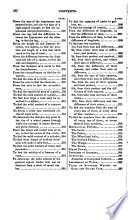 | Calvin Tracy - Arithmetic - 1842 - 306 pages
...HAVING DIFFERENT DENOMINATORS, TO EQUIVALENT FRACTIONS HAVING A COMMON DENOMINATOR. ivlllt. — Multiply all the denominators together, for a new denominator,...each numerator into all the denominators except its men, for a new numerator to each fraction. The several numerators, placed over the common denominator,... | |
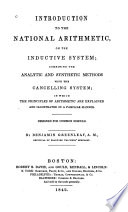 | Benjamin Greenleaf - Arithmetic - 1842 - 184 pages
...respective numerators of the fractions, and their products will be the numerators required. Or, multiply each numerator into all the denominators except its own for a new numerator ; and all the denominators into each other for a common denominator. 2. Reduce £ and £ to a common... | |
 | Nathan Daboll - Arithmetic - 1843 - 254 pages
...1. Hence the common denominator is 12, and j oi' 12 is --1.,-. and £ of 12 is -fa. RULE I. Multiply each numerator into all the denominators except its own, for a new numerator ; then multiply all the denominators together for a common denominator, and place it under each new... | |
 | James Bates Thomson - Algebra - 1844 - 266 pages
...see Art. 195, a. 118. To reduce fractions of different denominators to a common denominator. Multiply each numerator into all the denominators except its own for a new numerator ; and all the denominators together, for a common denominator; , 8. Eeduce -, and -„ and — to a... | |
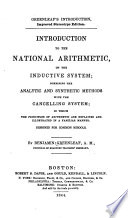 | Benjamin Greenleaf - Arithmetic - 1844 - 208 pages
...respective numerators of the fractions, and their products will be the numerators required. Or, multiply each numerator into all the denominators except its own for a new numerator ; and all the denominators into each other for a common denominator. 2. Reduce J and £ to a common... | |
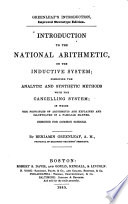 | Benjamin Greenleaf - Arithmetic - 1845 - 226 pages
...respective numerators of the fractions, and their products will be the numerators required. Or, multiply each numerator into all the denominators except its own for a new numerator ; and all the denominators into each other for a common denominator. it. Reduce f and |- to a common... | |
 | Horatio Nelson Robinson - Arithmetic - 1845 - 310 pages
...principle, we may understand the following rule, which is universal in its application : RULE. Multiply each numerator into all the denominators except its own, for a new numerator. Then multiply all the denominators together far a new denominator, and place it under each new numerator.... | |
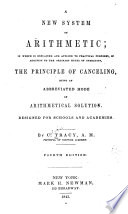 | Calvin Tracy - Arithmetic - 1845 - 298 pages
...HAVING DIFFERENT DENOMINATORS, TO EQUIVALENT FRACTIONS HAVING A COMMON DENOMINATOR. UttlC. — Multiply all the denominators together, for a new denominator, .and each numerator into aV, the denominators except its own, for a new numerator to each fraction. The several numerators,... | |
 | Z. Jones - Arithmetic - 1845 - 58 pages
...changed to those having like denominators, by multiplying together all the denominators for a like denominator, and each numerator into all the denominators except its own for new numerators. The two sets of expressions are of the same value; this is seen from § 0. I. 1. Unite... | |
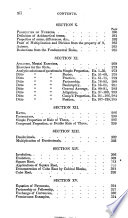 | James Bates Thomson - Arithmetic - 1846 - 354 pages
...viz : f=2, and f=£. (Art. 116.) Hence, 1 25. To reduce fractions to a common denominator. Multiply each numerator into all the denominators except its own for a new numerator, and all the denominators together for a common denominator. 2. Reduce ^, ^, and £ to a common denominator.... | |
| |